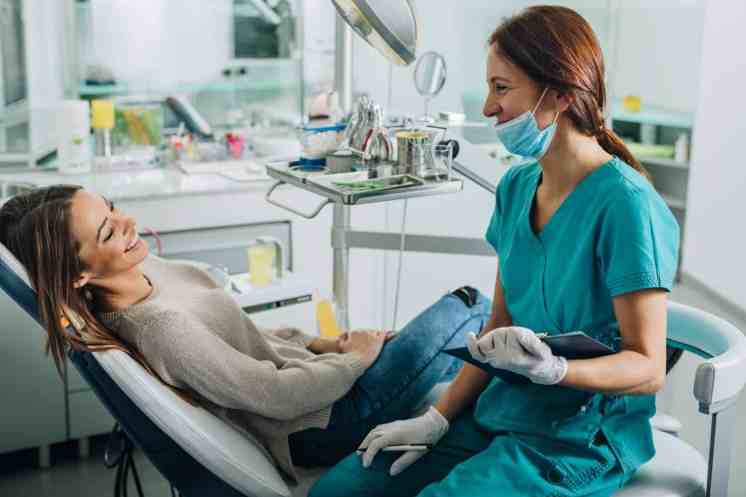
With over 700 photographs and drawings of basic and dental instruments, Dental Instruments: A Pocket Guide, 8th Edition builds on the spiral-bound, flashcard-style, flipbook format that makes it quick and easy for dental assistants, dental hygienists and dental students to master the instruments, equipment and examples of tray setups used in everyday practice.
Speaking on the expertise and thoughtful design of the new edition, author Linda Bartolomucci Boyd, CDA, RDA, BA, shares her insights in this Q&A.
What are the benefits of having the information laid out in a pocket atlas?
This format allows the user to fold the book over and use it as a flash card technique for studying. Each page is designed in the same format therefore helping the student learn in a precise and simple manner. As you open the spiral bound book, the picture of the instrument or piece of equipment is on the top page and all of the information regarding that instrument or piece of equipment is on the bottom page. Most pages have a full illustration of the instrument as well as close-up pictures of the working end(s). It’s laid out so that every single page that is written is in the same exact format. Another element of the image page is some instruments or equipment are labeled with numbers. In the text page the numbers are identified, allowing students to learn the intricate parts of the instrument or equipment. This format is great for the classroom learning as well as using this as an instrument guide and sterilization guide in dental offices.
On the bottom page, the text includes the Name of the Instrument, the Main Function of the instrument, Characteristics of the instrument which is information on other uses for the instrument, as well as Practice Notes which indicates examples of tray setups for instruments in that chapter. The Sterilization Note is the longest as every instrument or piece of equipment is processed differently. The information for the Sterilization Note is taken from the Guidelines for Infection Control in Dental Health-Care Settings (2003).
How is the content designed to benefit student learning and knowledge retention?
There are 21 chapters in this textbook. The chapters in this book begin with the basic setup—instruments such as a mouth mirror, explorer, cotton forceps—and then each chapter is specifically designated with individual instruments for different procedures as well as dental equipment such as handpieces, evacuation systems and equipment that is specific to functioning in a dental office. The chapters continue with routine dental procedures, such as composite instruments, dental materials equipment as well as dental specialty instruments such as orthodontic, oral surgery, endodontics, periodontics, dental imaging and diagnostic equipment, etc. Along with the Sterilization Note for each instrument there is a chapter specially dedicated to sterilization and protective equipment. Another great element of the text page to enhance the students learning is a cameo picture of the instrument “In Use”. This illustrates how the instrument is used in the mouth.
How should students seeking a career in dental assisting make sure they’re ready for clinical practice?
Having an excellent understanding of the dental instruments and equipment that students will encounter in the dental field will certainly enhance their ability to become great auxiliaries in the dental office. This seventh edition will help students and the clinicians stay current with the quickly changing technology of dentistry. However, although basic dental instruments and equipment have remained relatively unchanged throughout the years, there have also been new advances that accommodate new technology in the dental field.
Another important element in dental patient care is to understand the total health of the patient. It is extremely important to be mindful of how we treat each patient according to their health history. This book emphasizes in the last chapter how to monitor the patient’s health, considering things such as blood pressure and pulse. A chapter is also dedicated to patient assessment and emergency equipment used to monitor patients for routine dental treatment as well as treatment of sedated patients.
What advancements in dental instruments have been made that students should focus on?
Dental technology has advanced in the recent years. This text is developed to incorporate the new equipment that is used in the dental field. As the textbook editions have progressed, so has the addition of instruments and equipment. One area is dental imaging which has developed into more advanced equipment as well as more accurate diagnostic capabilities seen in the Cone-Beam Three-Dimensional (3D) Imaging System. Another area is technology in detection of oral cancer, such as VELscope Vx.
Another advancement is sterilization and protective equipment. Currently, this is an important element in the dental office. This is an area that has changed with the development of COVID-19. The information from this chapter comes from the Morbidity and Mortality Weekly Report (MMWR), Center for Disease Control, which includes everything you must know about guidelines of how to disinfect, sterilize or process instruments as well as information on protective equipment. Please refer to this information as some additional guidelines have been added since COVID-19.